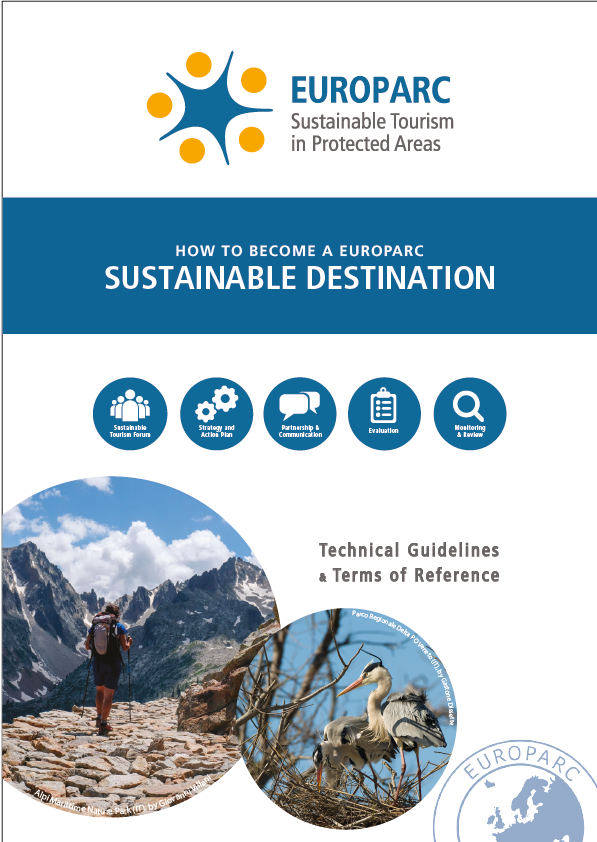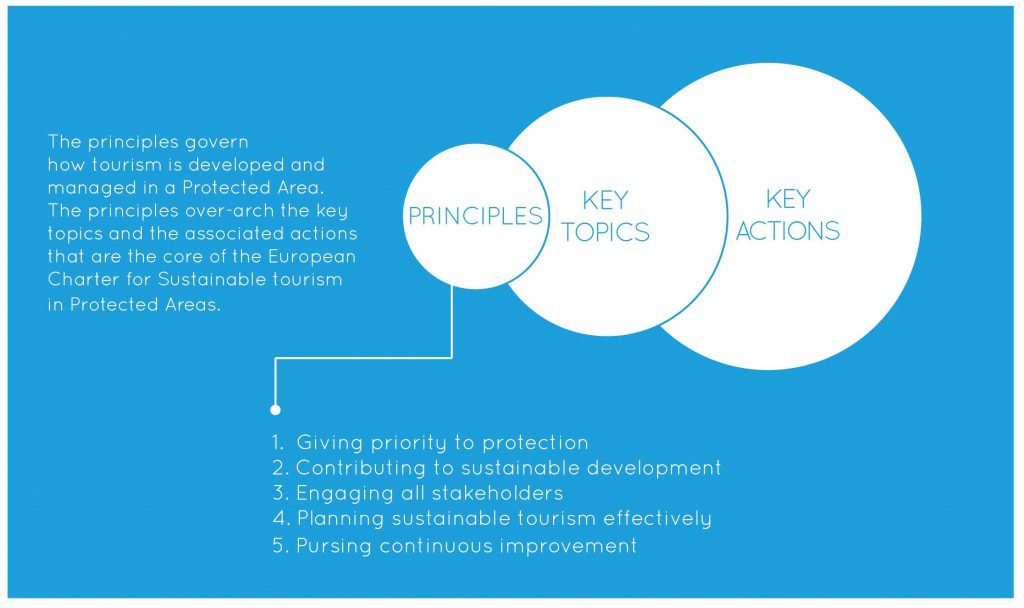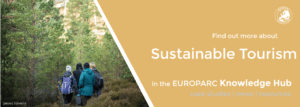Would you like your Protected Area to join the list of our Sustainable Destinations? This page will provide you with useful information about the whole process.
Join the Sustainable Destinations
To join our Network of Sustainable Destinations, fill in this ONLINE REGISTRATION FORM to provide us with basic information on your Protected Area and contact details. The following process is explained in the form and here below, so make sure to read it carefully.
PLEASE NOTE: Read all the questions in this PDF in advance and make sure you have all the required info at hand BEFORE completing the online form. The online form will not save your answers if you decide to leave and finish later, so we recommend to complete the registration form in one go.

Download the Technical Guidelines:
(English) How to become a EUROPARC Sustainable Destination – Technical guidelines
(Italian)_Come Diventare una Destinazione Sostinibile – Ligne guide tecniche
(French) Comment devenir une Destination Durable
(Spanish) Directrices técnicas y términos de referencia
(Catalan) Directrius tècniques i termes de referència
The annual deadline for submitting applications is the 15th of December.
GO TO THE ONLINE REGISTRATION FORM
Components of the ECST
After understanding the Vision, Mission and Principles of the ECST, you are ready to start your journey towards becoming a Sustainable Destination.

ECST principles, key topics and key actions
The components of the ECST involve working in partnership, preparing and implementing a strategy and addressing the key topics. The ECST requires that all Protected Areas have each of the components in place, which are described in more detail below.
1) Sustainable Tourism Forum
A permanent Sustainable Tourism (Charter) Forum, or equivalent arrangement, should be established between the protected area authority, local municipalities, conservation and community organizations and representatives of the tourism businesses. The constitution and numbers involved in the Forum and any associated Executive Committees or other structures, and the regularity of their meetings, should be sufficient to enable effective discourse and decision making.
Links with regional and national bodies should be developed and maintained. The Forum should also engage with other Forums in the ECST Network.
2) Strategy and Action Plan

A Strategy and Action Plan for Sustainable Tourism should be prepared, which:
- has three main elements: an assessment of the current situation; a strategic direction; and a practical action plan;
- is based on inclusive and effective consultation and is approved and understood by local stakeholders;
- covers a five year period (with some flexibility to allow for different planning cycles); and
- is a separate, self-contained document.
For further details on what should be included in the Strategy and Action Plan please read pages 4 and 5 of the Technical guidelines.
3) Evaluation
All protected areas seeking award of the ECST must engage in and facilitate the evaluation process. This involves:
- Submission of a completed application form, the Sustainable Tourism Strategy and Action Plan, and any other supporting material, which will be checked by an appointed verifier who is an expert in sustainable tourism and protected areas.
- A visit to the area by the verifier, which will include a programme of meetings and discussion with relevant stakeholders.
- Preparation of a report by the verifier. A version of this is subsequently made available to the Protected Area.
- Assessment of the application and the verifier’s report by the ECST Evaluation Committee, which makes a recommendation to the EUROPARC Council on whether to award the ECST, including any conditions or comments to pass on to the protected area.
- Subsequent attention to any matters raised by the verifier, evaluation committee and Council.
The evaluation process, including engagement with the verifier and receipt of their report, provides the protected area with valuable feedback and views on their sustainable tourism activity.
4) Monitoring and Review
Monitoring actions and impacts of sustainable tourism should be built into the process from the beginning, leading to review and adaptation. The Strategy and Action Plan should contain indicators and monitoring actions which cover:
- Progress with the implementation of actions;
- Results and changes in tourism performance and impacts.
Key data from the monitoring should be submitted to EUROPARC as part of an overall benchmarking and assessment of the ECST process as a whole. The ECST is normally awarded for a period of five years.
5) Partnership and Communication
Sustainable Destinations that have been awarded the ECST join the family of Protected Areas as partners in the ECST Network.
They are required to publicise and make visible their award. They are also encouraged to engage in networking and communication events and processes.
At a local level, Protected Areas are encouraged to follow a partnership approach in developing and managing sustainable tourism.
The ECST process itself makes provision for the development and recognition of partnerships between Protected Area authorities and tourism businesses through the award of ECST Partner status to tourism businesses that meet agreed criteria under Part II of the ECST (for local tourism businesses) and Part III of the ECST (for tour operators).
Engagement of Protected Areas with Part II or Part III of the ECST is optional.
